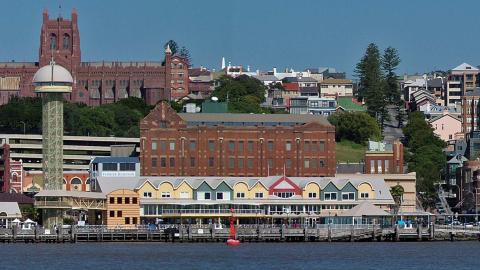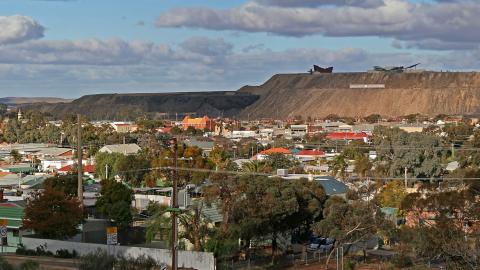
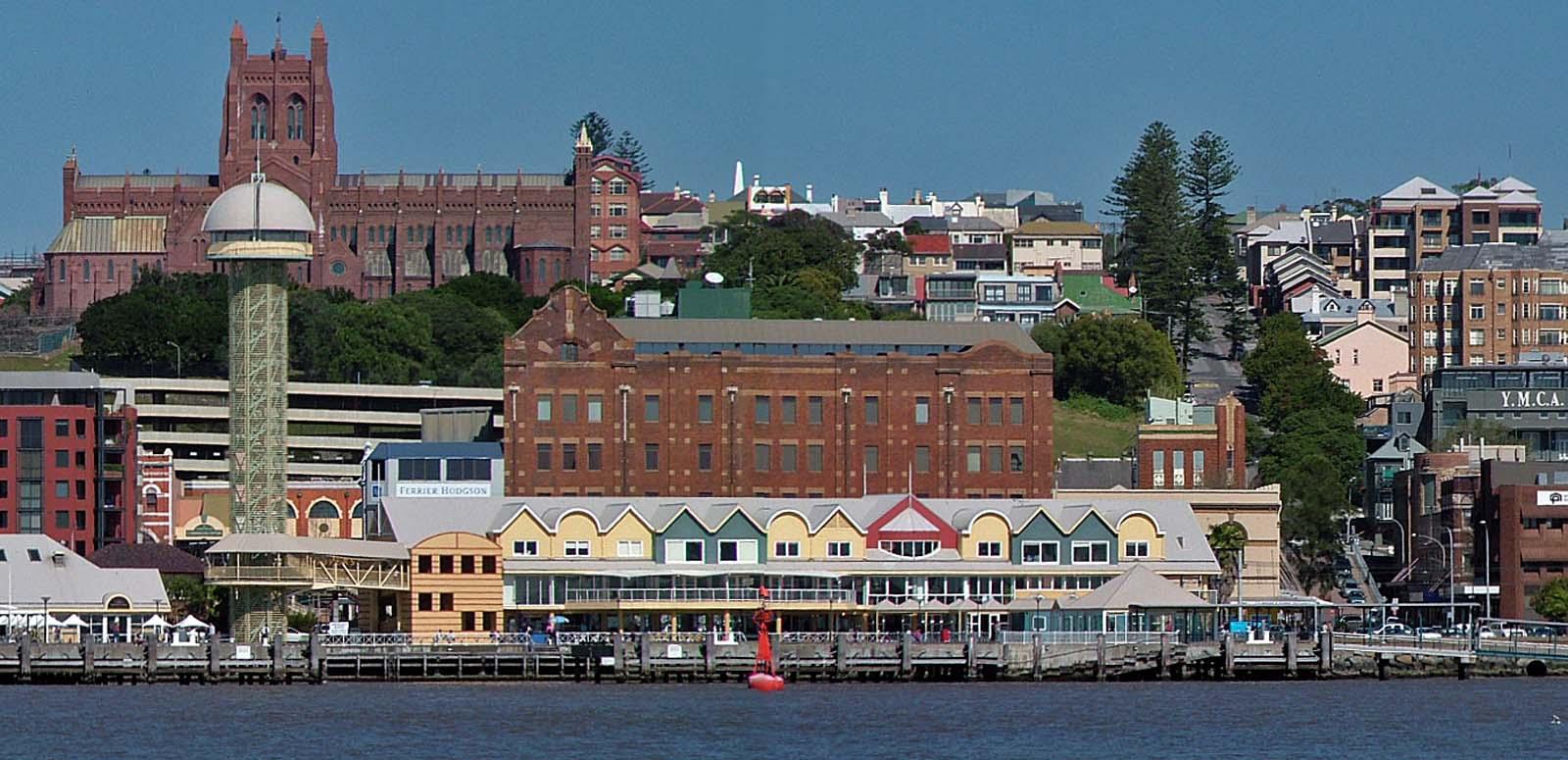
Newcastle time capsule
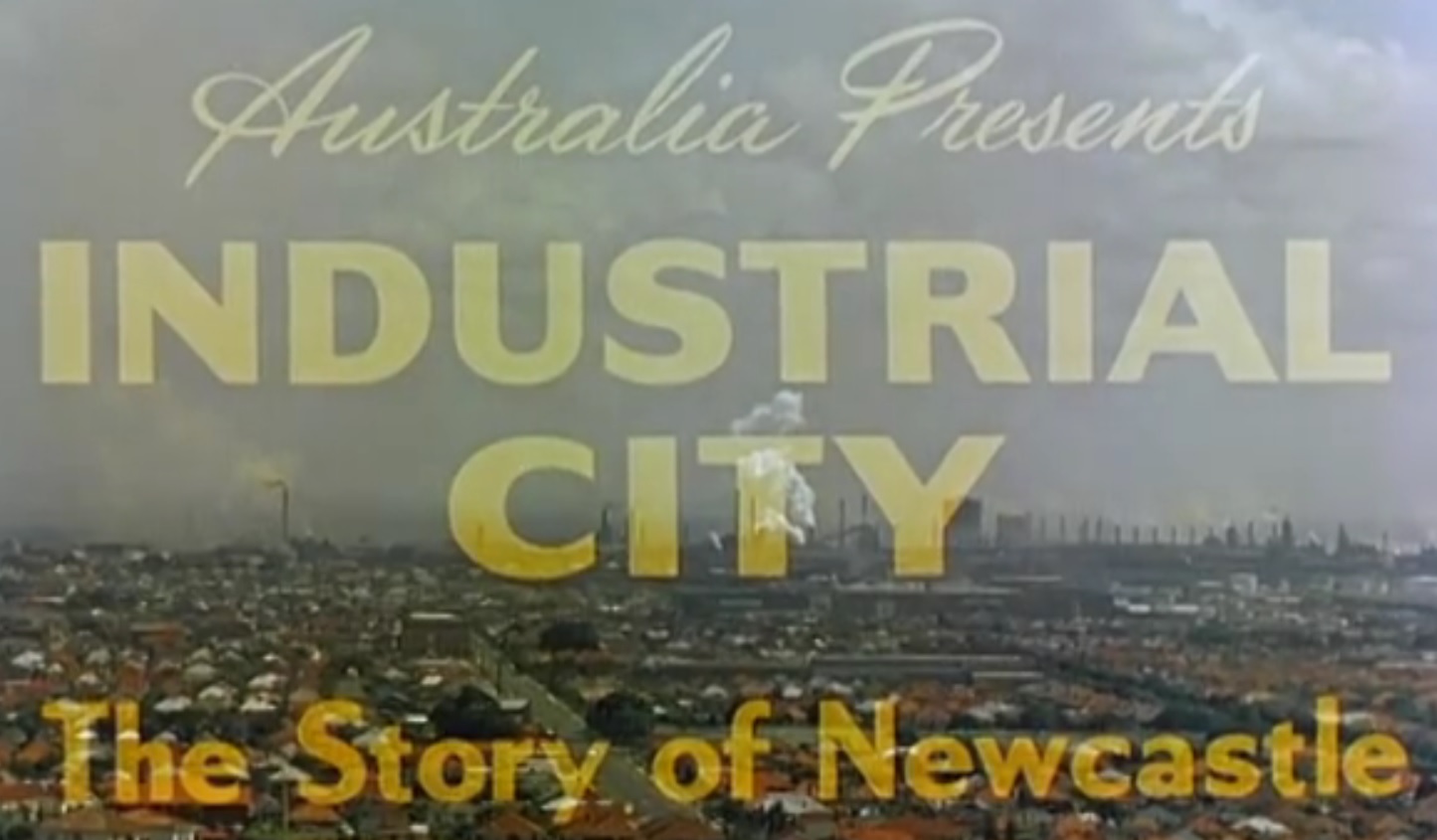
The Newcastle metropolitan area is situated within the Hunter Region and has the second largest population in New South Wales. Newcastle is a port city with the biggest coal exporting harbour in the world.
Prior to the discovery of coal the area was traditionally occupied by the Awabakal and Worimi people who called it Malubimba. It has been variously named King’s Town, Coal River, Kingstown and finally Newcastle, after Newcastle upon Tyne, UK.
There are many items about Newcastle in the NFSA collection. This sample dates from the 1910s to 2000s and highlights some of the history of the city and surrounding area.
Times of tragedy
Towards the end of 1989 Newcastle was the focus of national attention following two tragic incidents. On 3 November, 14-year-old schoolgirl Leigh Leigh was murdered while attending a birthday party at Stockton Beach. Her death received prolonged media coverage and resulted in a stage play and the feature film, Blackrock (1997, see below). Then on 28 December a magnitude 5.6 earthquake struck Newcastle killing 13 people, hospitalising a further 160 and causing an estimated 4 billion dollars’ worth of damage to 35,000 homes, 147 schools and 3000 buildings. This was the most damaging earthquake in Australian history.
This clip is an excerpt from a news special made by NBN Television. The footage shows the moment the earthquake struck and the immediate aftermath. It’s remarkable how composed reporter Ross Hampton is as he stands in the rubble with injured people and emergency crews. The footage of the Newcastle Workers Club is particularly chilling as the aerial view shows the extent of the disaster.
More than coal and steel
While the closure of BHP’s Newcastle steel-making plant in the late 1990s signalled the end of an era, Newcastle was starting to be seen by the rest of the country as about more than coal and heavy industry. One of Newcastle’s biggest exports has been the alternative rock band Silverchair.
They released their breakthrough album Frogstomp in 1995 when the band members were still in high school. The album went to number one in Australia and New Zealand and reached the top 10 on the US Billboard charts, ultimately selling more than 2.5 million copies worldwide. One song on the album, ‘Faultline’, references the 1989 Newcastle earthquake.
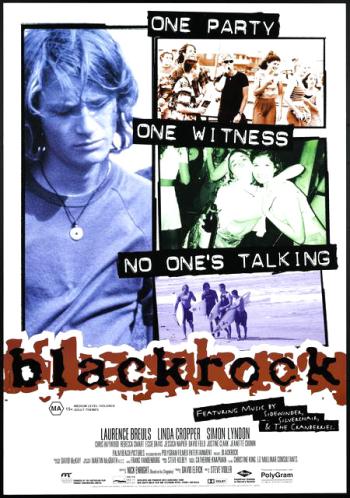
Blackrock (1997) was inspired by the tragic events surrounding the murder of teenager Leigh Leigh. Nick Enright first adapted the story into a 45-minute play called Property of the Clan, which premiered in 1992. Blackrock features the first feature film performance of Heath Ledger and debuted at the Sundance Film Festival on 24 January 1997 before opening in Australian cinemas on 1 May 1997.
This poster for the film (at right), with its hard black title over a frenzied, blood red background, graphically and effectively describes the tragedy upon which the film is based. The photos are leached of colour and are printed in monochrome, the main image being of a troubled male teenager. The tagline, ‘One Party. One Witness. No One’s Talking’, is depicted as if created by a Dymo letter printer, which gives the words a harsh, cold and impersonal feeling.
When US director Dan Castle made Newcastle (2008) he was shocked to discover that Australia had few surf-themed feature films. His film explores the relationship between three brothers: one a rising surfing star more interested in girls, his older brother an embittered fallen surfing champion, and Fergus, who is in the throes of discovering his sexuality.
Newcastle is a coming-of-age drama about teenagers exploring sex, drinking and surfing and features an early starring role for Xavier Samuel, before he was cast in The Twilight Saga: Eclipse (2010). Newcastle had its world premiere at New York’s famous Tribeca Film Festival in May 2008.
A city by the sea
For Newcastle, as for many towns and cities along the Australian coastline, the ocean serves as a means of transport for people and commerce but also as a place of recreation. In this clip from a 1920 newsreel, members of Sydney surf lifesaving clubs are in Newcastle participating in the annual surf carnival. We see teams participating in the March Past and in novelty events, and riding surf boards. The Surf Bathing Association of NSW was officially launched in 1907 and ‘clubbies’ are an iconic sight on Australian beaches during the summer.
‘Big Surf Gala: Newcastle’, Australasian Gazette No. 470, 1920. Please note this clip is silent. NFSA title: 100763
The Walsh Island Dockyard and Engineering Works was established in 1913 at Walsh Island on the Hunter River and by the early 1920s was the centre of Newcastle’s shipbuilding and engineering industry. Over 2500 workers built 47 vessels of various types as well as pipes, buses, bridges, weapons, munitions and railway stock. The dockyard was abandoned in 1933 during the Depression and finally dismantled. This newsreel clip from 1925 shows then NSW State Premier John ‘Jack’ Lang (also nicknamed, ‘The Big Fella’) and other politicians attending the launch of an Australian pilot vessel from Walsh Island.
All Australian Made, Newcastle, c1925. Please note this clip is silent. NFSA title: 16548
Newcastle’s maritime history includes over 200 vessels wrecked in and around the mouth of the Hunter River. The drowning of all but one of the passengers on board the paddle-steamer Cawarra in 1866 makes it one of Australia’s worst sea disasters. In this short clip from 1938, we see a steamship in dock with a huge gash in its side, the result of a collision. The footage graphically documents the remarkable extent of the damage, with the men examining the ship providing a useful scale reference.
Ship Rent in Collision, Newcastle, 1938. Please note this clip is silent. NFSA title: 79138
Defending Australia
This newsreel item from 1941 shows a canoe derby on Throsby Creek, Newcastle. It was of a fund-raising event to aid the purchase of a Spitfire aircraft during the Second World War. As crowds line the banks to watch, two ‘battleships’ hurl missiles at each other and the Bartolomeo Colleoni capsizes. The boy piloting the Sydney raises his arms in victory. Next we see a canoe race in more conventional craft, interspersed with shots of the crowd cheering on the competitors. The clip ends with two older boys racing for the finish line near a pier.
Thousands see canoe race in aid of Spitfire fund, Newcastle, 1941. Please note this clip is silent. NFSA title: 128285
This newsreel item from 1949 shows a military parade in Hunter Street of the amphibious 15th Northern Rivers Lancers (NRL) who formed part of the Citizen Military Forces. At Nobbys Beach in Newcastle, the tanks plunge into the sea, plough past Nobbys Head into Port Hunter, and onto another beach. The footage provides a dramatic record of the deployment of these military vehicles. The Japanese submarine I-21 shelled Newcastle on 8 June 1942 and, though there was little damage from the attack, it left the coastal city feeling vulnerable.
Amphibious Squadron, Newcastle, 1949. Please note this clip is silent. NFSA title: 129930
Industry
Newcastle’s history has been dominated by coal mining and the steel industry. The Broken Hill Proprietary Steel Works (BHP) opened in 1915 and continued to operate for 84 years, employing around 50,000 people during that time. This clip from 1917 shows Prime Minister Billy Hughes and others visiting BHP in connection with the Federal Shipbuilding Scheme.
Newcastle, NSW Federal Shipbuilding Scheme, 1917. Please note this clip is silent. NFSA title: 17769
While making a preliminary survey of the Hunter River in 1797, Lieutenant John Shortland reported finding coal in the region. After several aborted attempts, coal mining was underway in earnest by the 1830s. This newsreel item from 1957 depicts miners entering and leaving the Awaba State Coal Mine near Newcastle. We see them underground using picks and shovels and loading coal onto carts pulled by pit pony. The clip then shows the ‘modern way’ to mine coal, with advances in technology involving more sophisticated machinery and transport.
Coal Mining the Modern Way, Newcastle, 1957. Please note this clip is silent. NFSA title: 128513
Want more?
Watch more Newcastle films on the NFSA YouTube Channel:
Industrial City: the Story of Newcastle
Story of a City
The Coalminer
Wrestle training session with champion Leo Jensen
St. Moritz skaters: Roller skating
Coneheads and Coconuts: Hairdressing Convention, Newcastle
Photo credit (main image): 'Photo merged view of the centre of Newcastle. Taken from Stockton'. Published under Creative Commons 3.0. Photographer: Macr.
The National Film and Sound Archive of Australia acknowledges Australia’s Aboriginal and Torres Strait Islander peoples as the Traditional Custodians of the land on which we work and live and gives respect to their Elders both past and present.
